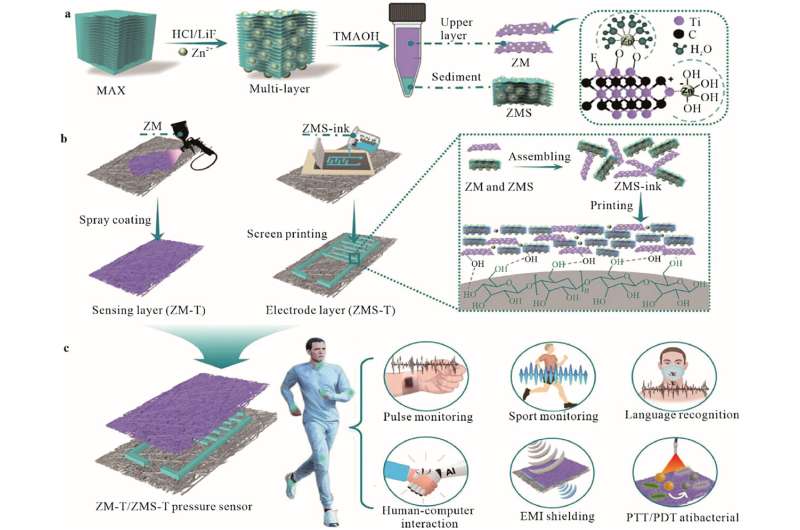
OCTOBER 7, 2024 by Journal of Bioresources and Bioproducts
Collected at: https://phys.org/news/2024-10-sustainable-material-cellulose-mxene-composites.html
The quest for sustainable materials with advanced functionalities has led to the development of a novel class of composites known as Cellulose-MXene. This innovative material, developed by researchers at Nanjing Forestry University and the University of Bayreuth, combines the abundant and renewable resource of cellulose with the remarkable properties of MXene, a family of two-dimensional transition metal carbides, nitrides, and carbonitrides. The work is published in the Journal of Bioresources and Bioproducts.
Cellulose, derived from sources as diverse as wood pulp and bacterial nanocellulose, has been widely recognized for its biodegradability and compatibility with living organisms. Its natural abundance and sustainability make it an ideal candidate for creating composite materials. The integration of MXene with cellulose aims to leverage the unique properties of both components, resulting in a material with enhanced performance characteristics.
The MXene family, noted for its high hydrophilicity, electronic conductivity, and nonlinear absorption coefficient, has been utilized in energy storage, catalysis, sensors, separation, and biomedical applications. The researchers’ composite material showcases exceptional properties such as photothermal, electrothermal, biocidal, and piezoelectric characteristics, making it suitable for a broad spectrum of uses.
In a significant breakthrough, the team led by Xiao developed a process to fully utilize MXene precursors, creating a smart pressure sensor and multi-protection materials. These materials demonstrated remarkable pressure sensitivity, efficient electromagnetic interference shielding, and superior antibacterial activity. The innovative approach also included the in-situ growth of zeolitic imidazolate framework-8 (ZIF-8) on the surface of cellulose nanofibers, further enhancing the material’s biocidal activity and electromagnetic interference shielding efficiency.
The study concludes that the integration of MXene with cellulosic materials endows them with intelligent and multifunctional properties, making them ideal for applications in wound dressings, desalination through solar energy, and as pressure sensors for monitoring human movements.
Economically, the chestnut tannin market is experiencing significant growth, with new extraction plants being established to meet the increasing demand. The global production is primarily concentrated in Europe, with countries like Italy, Slovenia, France, Portugal, and Spain leading the way.
In conclusion, chestnut tannin stands out as a promising bioresource with a broad scope of activities and potential for new applications in various sectors. As research continues to uncover its capabilities, chestnut tannin is well on its way to becoming a key player in the bioeconomy.
More information: Farzad Seidi et al, Cellulose-MXene composites: New platforms with outstanding multifunctional characteristics, Journal of Bioresources and Bioproducts (2024). DOI: 10.1016/j.jobab.2024.05.002

Leave a Reply